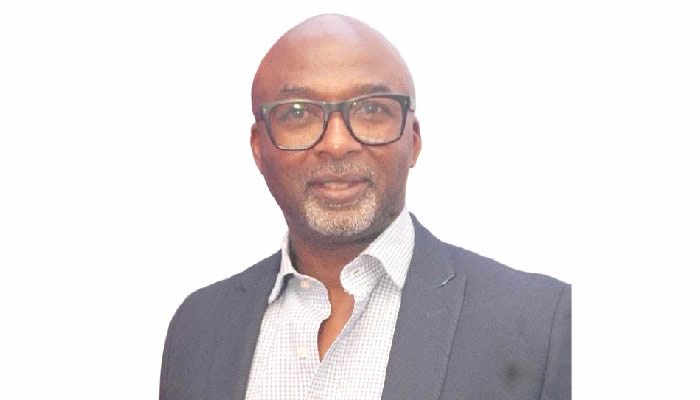The Managing Director of Bboxx Nigeria, Ernest Akinlola, explains the uphill battle mobile virtual network operators face in Nigeria’s capital-intensive telecom market in this chat with JUSTICE OKAMGBA. As operators that lease network access instead of building infrastructure, MVNOs must rely on clear differentiation and strong business models to survive and thrive amid high entry barriers
How difficult is it to play in the telecom sector?
The Nigerian telecommunications industry is highly capital-intensive, burdened by high operational costs, and operates as a commodity service with intense competitive rivalry. Given this context, a clear differentiation strategy, robust cost control, and access to long-term capital are critical for sustaining telecom operations in Nigeria.
Several telcos have faced significant fundraising challenges for network expansion and quality improvements. In some cases, the tower OPEX model has proven too costly, whether managed in-house or outsourced, with substantial debts owed to tower aggregators. This negatively affects service quality, which is particularly damaging for a commodity service. Inevitably, customers port or defect, leading to a sharp decline in revenue, making it difficult to cover ongoing operational costs.
Regarding the regulatory landscape, the NCC has consistently shown strong support for industry players. In my various leadership roles, I have participated in several meetings with the NCC, all of which were conducted with a focus on ensuring long-term sustainability for all stakeholders in the ecosystem, including consumers.
This focus is essential, as telecoms serve as a critical enabler of economic growth and are fundamental to daily life in Nigeria. Striking the right balance remains one of the NCC’s greatest challenges. For example, data and airtime tariffs remained unchanged for 13 years, despite prolonged periods of hyperinflation.
This undoubtedly hindered network investments and compromised service quality. However, following sustained advocacy by telecom operators, the NCC recently approved up to a 50 per cent increase in tariffs. While this was less than what the industry had requested, the Commission had to weigh the potential impact on consumers to maintain a fair and balanced market.
The telecom sector is dominated by a few major players. Is there room for new competition?
I think there is room for new competition, and this may be in the form of new entrants or new innovative models from the incumbent operators. For new entrants, the barriers to entry remain high, and very few will be able to make an inroad to the market and remain viable. So, I expect limited new competition at scale, but there will be some good opportunities in B2B.
Most new competition will come in the form of collaboration and innovation in product launches and network sharing, as we have seen with two leading telcos. I believe that this paves the way for more collaboration and consolidation in the sector.
You were involved in pioneering the mobile virtual network operator model in the UK. Is Nigeria ready for MVNOs, and what key conditions are needed for their success?
I have published extensively on this topic on LinkedIn. Nigeria is ready for mobile virtual network operators, as the model is fundamentally aimed at providing broader customer choice and improved service. However, I would turn the question around: are the MVNOs ready for Nigeria?
Have they sufficiently differentiated their propositions? Do their business cases still hold up in the current economic climate? What impact will the 14 per cent USA tariff have on imported equipment? How quickly can they scale their operations?
So far, 46 MVNO licences have been issued, but only a few have launched operations, while others are preparing to launch soon. Several other conditions are critical for success, and we’ll have to wait and see what offerings the public and business community will be presented with in the coming months.
Emerging economies have a unique opportunity to accelerate their growth by leapfrogging traditional stages of technological evolution. In telecommunications, this means that the latest innovations can be deployed without the burden of legacy systems. However, it’s crucial that the market be prepared for such advancements.
I would argue that the most significant opportunity lies in innovation around processes and cost collaboration among telecom operators. Additionally, clearly identifying and targeting specific use cases for 5G will be critical to driving meaningful adoption and impact.
Why do you think past telcos failed to scale in Nigeria’s 4G market, and what key lessons would you share with a new entrant today?
Apart from the previously mentioned infrastructural challenges, there are specific use cases that reveal both strategic and tactical issues. The choice of technical partner is critical from both a capability and commercial standpoint. Without the support and long-term commitment of a reliable technical partner, it becomes difficult to scale operations, differentiate service offerings, and disrupt the market. In some instances, telcos adopted a niche-focused data strategy, which works well in the early stages when the network is uncongested, but over time, service quality suffers, leading to customer churn.
Given the industry dynamics outlined above, new entrants must clearly define their Total Addressable Market, Serviceable Available Market, and Serviceable Obtainable Market. Without a thorough market analysis and a sustainable value proposition, especially in a saturated market with multiple players, success will be difficult to achieve.
Secondly, a new entrant must have a clear strategy for service differentiation. If this is not well defined, I would strongly advise against entering the market.
Finally, be cautious about adopting emerging technologies such as 5G. Incumbents have the financial strength to take a long-term view on new technologies before they break even, whereas new entrants often fall into the trap of believing that new tech alone will set them apart. In many cases, consumer demand for such technology is still lacking. Ultimately, success comes down to a deep understanding of the market.
5G adoption remains low. What barriers do you see, and how can they be addressed?
This relates to a point I made earlier: while 5G adoption may appear low among the mass market, businesses and corporations are making effective use of its bandwidth. Adoption should therefore be viewed by market segment.
Banks, financial institutions, and other high-compute sectors represent key use cases for 5G. Other adopters include hospitals, clinics, and telemedicine platforms, which leverage 5G for remote diagnostics, video consultations, and the transmission of large medical data files. So, in reality, there is significant adoption within these segments.
For most consumers, however, 5G remains unaffordable, especially in a market where the average daily wage is less than $2. As a result, telecom operators are strategically targeting their 5G rollout to maximise impact and return on investment.
With the rise of Starlink, do you see traditional mobile operators facing new threats?
The simple answer is yes. Direct-to-Cell has already been successfully launched in countries like the USA, Japan, Switzerland, and Canada, and it is gaining momentum. In the long term, it poses a significant threat to traditional telecom operators.
D2C is compatible with existing smartphones and connects directly via satellite, making it unencumbered by terrestrial infrastructure. While current bandwidth throughput is still relatively low, it is improving rapidly and is expected to soon match 4G performance levels.
Mobile network operators will need to begin partnering with providers like Starlink to offer bundled services in order to retain customers. However, satellite technology isn’t the only emerging threat. Companies like Google and Meta are developing authentication systems that bypass SMS one-time passwords, signalling a shift away from traditional SMS usage, a trend that further erodes a key revenue stream for MNOs.
You’ve transitioned into renewable energy. What prompted this shift, and how does it intersect with your telecoms background?
I am naturally drawn to nascent industries driven by the opportunity to make a positive impact and accelerate economic growth.
So, five years ago I was privileged to be asked to launch Bboxx Nigeria, and the rest is history.
Telecommunications did that 20 years ago, and now solar energy is doing the same today. Data and power are the fundamental drivers of transformational change in any economy.
What realistic solutions exist for telcos to transition from diesel to renewable energy?
An interesting fact is that Nigeria has approximately 42,000 base stations, likely only half of what is actually required. Diesel accounts for around 60 per cent of a telco’s operating expenses, creating a strong incentive and pressing need to reduce these costs.
As a result, the solarisation of telecom infrastructure has become essential. Currently, only about 20 per cent of these towers are solar-powered. The industry term is “Tower Power”, and there are several ongoing projects aimed at accelerating this transition. Typically, these initiatives involve a well-funded OEM deploying tower power solutions and entering into a revenue-sharing model with the telco or the tower provider based on cost savings.
It’s also important to note that most telecom base stations in Nigeria have long been sold to tower companies, which now manage co-location of telco equipment, including Home Location Registers. That said, the essence of the question remains relevant.
Base stations are costly to operate and maintain, diesel being the most significant expense to ensure round-the-clock functionality. Other challenges include insecurity, difficult site access, high maintenance costs, and the operational complexity of managing field engineers.
Every tower company and telco in Nigeria is now actively pursuing a solarisation strategy to address these challenges and drive long-term sustainability.
Are the regulators doing enough to encourage green telecom infrastructure?
Renewable energy proliferation falls under the purview of Nigerian Electrification Programme. NEP does not directly promote electrification programmes for telecom towers; the sector benefits from complementary private investments and government initiatives aimed at improving energy efficiency and connectivity.
Several FDI initiatives are currently being deployed in the telecoms space at present.
Which countries do you think Nigeria’s telecom sector should learn from in adopting clean energy solutions?
This question seems to assume that Nigeria is merely a follower in adopting solar technologies. However, due to our unique challenges, Nigeria often leads as a pioneer in this area. Many original equipment manufacturers conduct dedicated research and development and even manufacture solutions specifically tailored for the Nigerian market.
Additionally, several well-known sovereign funds are actively investing in deploying these solar solutions for Nigerian tower companies, further accelerating the country’s leadership in this space.















